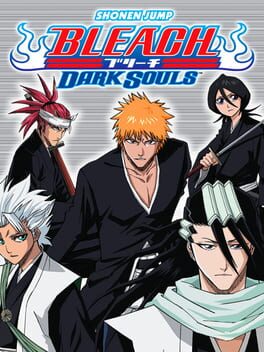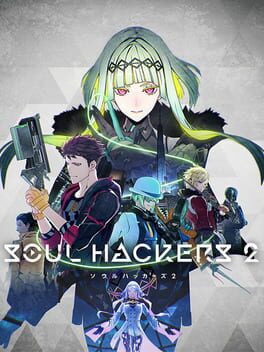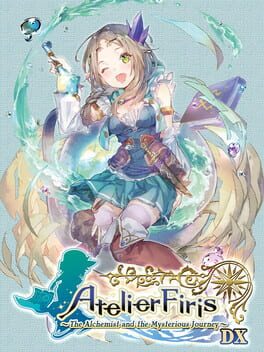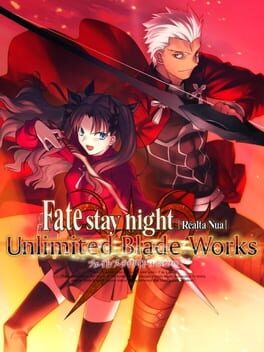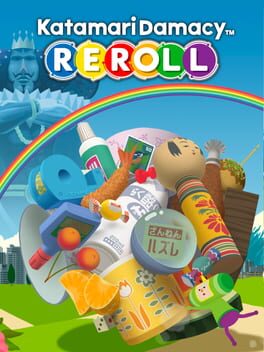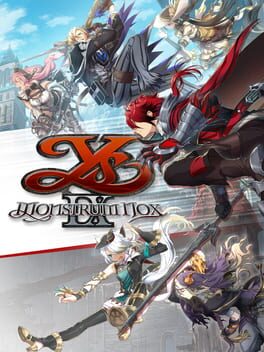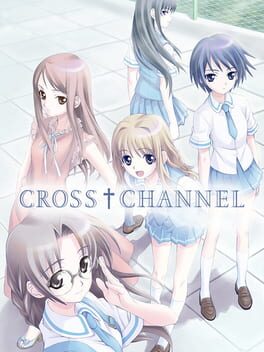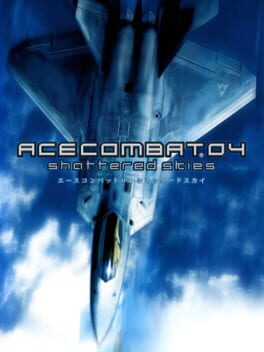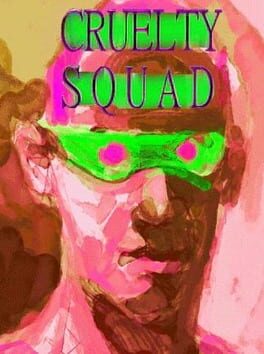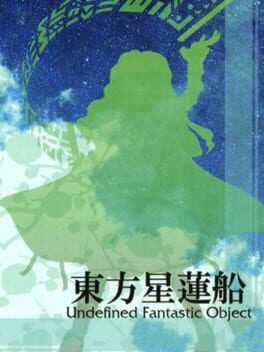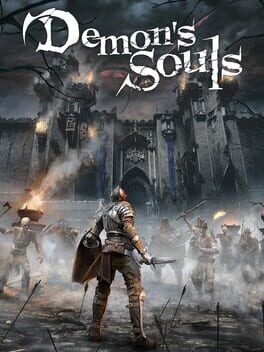Apocynadeae
2007
2022
"Decided to go on a never-ending, mysterious journey."
The idea of an open-world isn't necessarily a new concept for contemporary game design; you could argue most of the Legend of Zelda's games are "open world", with being set in a world for the player to explore and crack open, learning of its various mysteries and details. The term has absolutely caught on more nowadays; Breath of the Wild, in an attempt to harken back to more "outdated" game design, heralded a new era of open world exploration, which multiple games have either succeeded at replicating or disastrously failed.
None of this is as important as two key components of the open-world; gameplay loop and exploration. A common complaint levied against various open world games is the fact that their worlds are "empty". Personally, I consider it to be somewhat of a misnomer. Open world games are never necessarily empty as much as it simply fails to disguise and vary its gameplay loop in an effective manner. Sonic Frontiers is the premiere example to me where I could say that the world in Sonic Frontiers is simply "empty", but that's not an accurate complaint. One could simply point at all the content and say hey, see, it's not empty! However, think of what you do in Sonic Frontiers. The loop is consistently finding resources to unlock more scenarios. You go through the world to find more stat boosts, keys, or emblems for story, leading up to the final fight in that area. Personally, I find this incredibly dull for two reasons. The world is dull, and the gameplay is always exactly the same.
Atelier Firis, in that regard, is the first attempt Gust had to create an "open world" Atelier game. Based entirely around our protagonist, Firis, and her journey thorought a part of the world that the Mysterious Trilogy is set in. The entire world that Firis travels thorought is one we, as the players, are forced to travel on foot through the process of an entire in-game year, incentivizing the players to explore as much as they can. And to reach the conclusion a little earlier than the end, I think Atelier Firis nailed the concept of an open-world to a degree no other game has ever really reached.
The game centers around the eponymous Firis, alongside her sister/siscon Liane, who go on a journey after Sophie and Plachta blew up the door of their village of Ertona, an underground sealed mining village, entirely self-sufficient. Firis has always wanted to go outside, bedazzled by the tales of the outside world given by Liane and various books she owns. Regardless, her parents forbid her to due to the dangers. As Sophie arrives and Firis gains a liking to alchemy, a deal is struck; if Firis is able to obtain an alchemy license in a year's time, she will be able to go outside as she pleases, setting off the events of the game.
The plot in Firis is sparse after that point, but Atelier games are generally never about the plot as much as they are about the characters. However, in Firis, I'd say the characters are secondary to the real crux of this game: Exploration. Since Firis is on a journey, the game's open-world formula unfolds. Rather than the world being a set of areas, separated thorought time intervals accessed in the world map, Atelier Firis does not let you fast travel through the world map, instead having to walk directly thorought all of the zones, as they are all huge, varied areas interconnected with each other. Regardless, this departure from the original style of Atelier doesn't really stop here. This isn't a guide, so I won't get too deep into the differences between Sophie and Firis (and to an extent, Ryza and the Dusk trilogy), however I will say that the one thing I thought was a little weaker was the alchemy. I enjoy Sophie's alchemy despite being very confusing at first, but the Catalyst system seemed somewhat underwhelming and I never exactly understood the best way to synthesize stuff outside of simply having decent materials.
The way Firis incentivizes exploration is great as well. Thorought the game, you obtain sidequests. These sidequests aren't always given by characters, but are more like thoughts Firis has. She usually will comment about hearing a voice, or water, and wondering what there would be in said location, thus ensuing a small trek to find the source of it. These usually give you landmarks, which are locations one can fast travel to if you're in the same area as it. There was a specific highlight with these little sidequests; during my exploration of the Traveler's Grove, I got a sidequest about a man with medicine. The location it led me to was Dona; a location which had an alchemist. Thanks to that, I was able to get a letter of recommendation as the player requires three in order to participate in the exam. Alongside that, the White Fog Forest also holds a lot of Dona Wood among other ingredients which are crucial for a lot of alchemy, so being aware of it helped a lot for later, when I could simply return and gather more.
Regardless, as said, despite the time limit present in Atelier Firis, you are very incentivized to explore the world. Through these sidequests with legitimate rewards, the more merchants you find, the bigger variety of items and the more recipes you discover, the more allies you find in the world, the very process of exploration is the most crucial aspect of the game. Everything about it lends to the game, and it helps that the exploration itself is a joy. The game, visually, is absolutely fantastic. While the character models are a little off when seen up close, the enviorments are absolutely beautiful and mesh very well with the enemy design. The one exception is that the Atelier looks kind of bad, but you get used to it.
Regardless, as you explore more, meet more of the cast, such as Angriff, a mercenary you hire, and Ilmeria, Firis's girlfriend, and as you see more of the world, meet more alchemists, obtain more clothing with different effects, resolve more sidequests, and finally reach Reisenberg and clear the exam, the credits roll. While the journey might have been a straight line, Firis was able to succeed and see the world through her eyes, learning more and growing.
Until, of course, the second part of the game. I actually love this part of the game much more than the first part; I consider it the best aspect of Firis. Gone is the time limit, you gain the ability to make many more tools to ease exploration, and the characters really start gaining more depth. After all, this aspect is less about Firis rushing to secure her freedom, but now that she has it, what will she do? From here we really do undestand more and more of these characters. Personally, I did only the necessary endings for the true ending; that being Ilmeria, Sophie, Meklet/Atomina, Liane, and Angriff's endings. All their events are absolutely great; Ilmeria and Firis's relationship is very nice and cute, with both improving each other. Liane had some of the strongest writing yet here, graduating from being just a funny siscon to someone much more genuine to watch and see how she cares for Firis as family. Sophie isn't a huge improvement from how she's written in her game, but she was great then, and just seeing her take a teaching role is nice to see. Angriff's funny, but he feels like a very genuine role model to Firis in a sense, despite still being a very unprofessional man. He cares, however; and that's great! I loved going through their events and learning of them, and by the end I loved them all almost-equallly.
Regardless, the real crux of Atelier Firis is exploration and growth. While Atelier is a series that has always been about growth, Firis's spin on it is a much more unique iteration of it. It's not simply inner growth as a human or with skills in alchemy, but it's the emergence from an egg. She leaves her nest and her growth comes from her environment and peers. It's something which is why I consider it one of the absolute best in terms of an open-world game. It isn't just good in its exploration and in the variety of its gameplay loop. The fact it IS an open world enhances it to heights the series never really saw until this point. My journey through the world that the Mysterious trilogy is nowhere near over, not simply because I'm missing two games after this, but because this game's world by itself is so dense that I feel I will never really stop loving it, the same way Firis will never really finish the mysterious journey she longed for years.
The idea of an open-world isn't necessarily a new concept for contemporary game design; you could argue most of the Legend of Zelda's games are "open world", with being set in a world for the player to explore and crack open, learning of its various mysteries and details. The term has absolutely caught on more nowadays; Breath of the Wild, in an attempt to harken back to more "outdated" game design, heralded a new era of open world exploration, which multiple games have either succeeded at replicating or disastrously failed.
None of this is as important as two key components of the open-world; gameplay loop and exploration. A common complaint levied against various open world games is the fact that their worlds are "empty". Personally, I consider it to be somewhat of a misnomer. Open world games are never necessarily empty as much as it simply fails to disguise and vary its gameplay loop in an effective manner. Sonic Frontiers is the premiere example to me where I could say that the world in Sonic Frontiers is simply "empty", but that's not an accurate complaint. One could simply point at all the content and say hey, see, it's not empty! However, think of what you do in Sonic Frontiers. The loop is consistently finding resources to unlock more scenarios. You go through the world to find more stat boosts, keys, or emblems for story, leading up to the final fight in that area. Personally, I find this incredibly dull for two reasons. The world is dull, and the gameplay is always exactly the same.
Atelier Firis, in that regard, is the first attempt Gust had to create an "open world" Atelier game. Based entirely around our protagonist, Firis, and her journey thorought a part of the world that the Mysterious Trilogy is set in. The entire world that Firis travels thorought is one we, as the players, are forced to travel on foot through the process of an entire in-game year, incentivizing the players to explore as much as they can. And to reach the conclusion a little earlier than the end, I think Atelier Firis nailed the concept of an open-world to a degree no other game has ever really reached.
The game centers around the eponymous Firis, alongside her sister/siscon Liane, who go on a journey after Sophie and Plachta blew up the door of their village of Ertona, an underground sealed mining village, entirely self-sufficient. Firis has always wanted to go outside, bedazzled by the tales of the outside world given by Liane and various books she owns. Regardless, her parents forbid her to due to the dangers. As Sophie arrives and Firis gains a liking to alchemy, a deal is struck; if Firis is able to obtain an alchemy license in a year's time, she will be able to go outside as she pleases, setting off the events of the game.
The plot in Firis is sparse after that point, but Atelier games are generally never about the plot as much as they are about the characters. However, in Firis, I'd say the characters are secondary to the real crux of this game: Exploration. Since Firis is on a journey, the game's open-world formula unfolds. Rather than the world being a set of areas, separated thorought time intervals accessed in the world map, Atelier Firis does not let you fast travel through the world map, instead having to walk directly thorought all of the zones, as they are all huge, varied areas interconnected with each other. Regardless, this departure from the original style of Atelier doesn't really stop here. This isn't a guide, so I won't get too deep into the differences between Sophie and Firis (and to an extent, Ryza and the Dusk trilogy), however I will say that the one thing I thought was a little weaker was the alchemy. I enjoy Sophie's alchemy despite being very confusing at first, but the Catalyst system seemed somewhat underwhelming and I never exactly understood the best way to synthesize stuff outside of simply having decent materials.
The way Firis incentivizes exploration is great as well. Thorought the game, you obtain sidequests. These sidequests aren't always given by characters, but are more like thoughts Firis has. She usually will comment about hearing a voice, or water, and wondering what there would be in said location, thus ensuing a small trek to find the source of it. These usually give you landmarks, which are locations one can fast travel to if you're in the same area as it. There was a specific highlight with these little sidequests; during my exploration of the Traveler's Grove, I got a sidequest about a man with medicine. The location it led me to was Dona; a location which had an alchemist. Thanks to that, I was able to get a letter of recommendation as the player requires three in order to participate in the exam. Alongside that, the White Fog Forest also holds a lot of Dona Wood among other ingredients which are crucial for a lot of alchemy, so being aware of it helped a lot for later, when I could simply return and gather more.
Regardless, as said, despite the time limit present in Atelier Firis, you are very incentivized to explore the world. Through these sidequests with legitimate rewards, the more merchants you find, the bigger variety of items and the more recipes you discover, the more allies you find in the world, the very process of exploration is the most crucial aspect of the game. Everything about it lends to the game, and it helps that the exploration itself is a joy. The game, visually, is absolutely fantastic. While the character models are a little off when seen up close, the enviorments are absolutely beautiful and mesh very well with the enemy design. The one exception is that the Atelier looks kind of bad, but you get used to it.
Regardless, as you explore more, meet more of the cast, such as Angriff, a mercenary you hire, and Ilmeria, Firis's girlfriend, and as you see more of the world, meet more alchemists, obtain more clothing with different effects, resolve more sidequests, and finally reach Reisenberg and clear the exam, the credits roll. While the journey might have been a straight line, Firis was able to succeed and see the world through her eyes, learning more and growing.
Until, of course, the second part of the game. I actually love this part of the game much more than the first part; I consider it the best aspect of Firis. Gone is the time limit, you gain the ability to make many more tools to ease exploration, and the characters really start gaining more depth. After all, this aspect is less about Firis rushing to secure her freedom, but now that she has it, what will she do? From here we really do undestand more and more of these characters. Personally, I did only the necessary endings for the true ending; that being Ilmeria, Sophie, Meklet/Atomina, Liane, and Angriff's endings. All their events are absolutely great; Ilmeria and Firis's relationship is very nice and cute, with both improving each other. Liane had some of the strongest writing yet here, graduating from being just a funny siscon to someone much more genuine to watch and see how she cares for Firis as family. Sophie isn't a huge improvement from how she's written in her game, but she was great then, and just seeing her take a teaching role is nice to see. Angriff's funny, but he feels like a very genuine role model to Firis in a sense, despite still being a very unprofessional man. He cares, however; and that's great! I loved going through their events and learning of them, and by the end I loved them all almost-equallly.
Regardless, the real crux of Atelier Firis is exploration and growth. While Atelier is a series that has always been about growth, Firis's spin on it is a much more unique iteration of it. It's not simply inner growth as a human or with skills in alchemy, but it's the emergence from an egg. She leaves her nest and her growth comes from her environment and peers. It's something which is why I consider it one of the absolute best in terms of an open-world game. It isn't just good in its exploration and in the variety of its gameplay loop. The fact it IS an open world enhances it to heights the series never really saw until this point. My journey through the world that the Mysterious trilogy is nowhere near over, not simply because I'm missing two games after this, but because this game's world by itself is so dense that I feel I will never really stop loving it, the same way Firis will never really finish the mysterious journey she longed for years.
Katamari is life. We are Katamari.
We build ourselves up from the smallest piece of knowledge until the grandest mass of life, of our records in life, as we die memorialized as life in the skies. We are Katamari. We are the true realization of it. When one is asked, "What the fuck is a Katamari", respond with "What is life?" For Katamari is life. We are Katamari. Katamari is us. I am Katamari and you are Katamari, we are both Katamari, though I am not you. We live as the holy trinity of Katamari.
Katamari is life. We are Katamari.
We build ourselves up from the smallest piece of knowledge until the grandest mass of life, of our records in life, as we die memorialized as life in the skies. We are Katamari. We are the true realization of it. When one is asked, "What the fuck is a Katamari", respond with "What is life?" For Katamari is life. We are Katamari. Katamari is us. I am Katamari and you are Katamari, we are both Katamari, though I am not you. We live as the holy trinity of Katamari.
Katamari is life. We are Katamari.
2019
I would easily say that I consider Ys VIII Falcom's magnum opus. The base of the game is perfectly crafted to perfection, with its exploration being fun and immensely rewarding and its gameplay being easy to learn but immensely satisfying to execute. Alongside that, it has an immaculate setting, with a lot of variety that never necessarily strays from its base concept but keeps it fresh to play through its 50 hour runtime. Additionally, I love the Village; every character feels important and related to this world and united to the cause, and seeing more people join and the village develop is a joy, giving stronger motivation to do the side quests, not just for the true ending, but for the village. The plot is also amazing and the mysteries drew me in more and more and the ending was amazing.
But this isn't a review for Ys VIII, but IX. Why write so much about a different game for a review for its sequel? That's easy: because IX does every aspect of this in a much worse way.
Obviously, to get positives out of the way, traversal and combat is still perfect. It'd be hard to mess up, but this is definetly an improvement to VIII. All the characters are a fun time and the new abilities lead to very fun traversal. The music is also good. That's where the positives ends.
The biggest problem IX suffers from is its structure. Fair warning that I dropped this game at chapter 5 so I at least have a strong grasp on it until that point, but IX is an immensely repetitive game to that point. Each chapter starts with you doing some side quests to max out the gauge, which then you do a non-Monstrum Adol section, which then the Monstrums reenter the prison through a previous dungeon, and you get a new character for Primavera. Then, plot ensues, you explore the newly unlocked section of the map, go through a dungeon, fight a boss, and reenter the prison.
The best way to describe these 5 chapters is immensely tedious and repetitive. There are interesting parts of these characters, for example, Doll and Hawk are both great, but it is not enough to really carry this game when little to no actual progress to the plot is done.
You could, of course, say that the lack of progress isn't too bad as its added focus to the characters and exploration is useful, and maybe I'd agree, but while IX's toolset for exploration is great, its actual settings are barren. All the locales, barring any set outside Balduq which even then feel a little boring, are brown-gray dark and ugly dungeons that feel akin as if walking through New York during a power outtage at night. Exploration never does feel fresh or interesting because every locale is the exact same, and thus only the actual toolset can really carry the game.
Even then, to switch gears, let's talk about the characters. Remember what I said about Ys VIII's Castaway Village? What if you copied it and did absolutely nothing to rectify it or adapt it for the new setting? That's Primavera. Primavera is immensely uninteresting and its members lack any real hook or reason to want to interact with them. The Castaway Village works entirely because of the setting; these characters are entirely incapable of escaping the island, and even less so alone, so survival works out. It immerses you into their desires and wants. But Primavera has none of these ties; all these people can just... leave.
(Its strongest use is giving the Monstrums a safe haven, but I honestly feel it's a little silly considering they existed for a while before...? But, y'know, details.)
So what exactly does Ys IX have going for it? If the exploration is inherently repetitive and the structure drags more than it helps, and the combat can only go so far for the game, what else can really carry it?
...The story?
Obviously, I can't comment on it considering I did 5 chapters out of the 9 the game has, but the story isn't particularly interesting. Sure, Balduq's circumstances invite some intrigue, but it's intrigue that doesn't exactly carry through the whole game and more with the Adol segments specifically as the rest of the chapters focus more on the party member's specific focus. Which are... hit or miss. I don't like White Cat's much because the Robin Hood angle is good, but the execution of it feels a little mean-spirited. I do like Hawk and Doll's since I like their characters and specific struggles, but I felt fatigue start to hit with Raging Bull which I thought was mediocre, and the final one seemed to be the same.
It is a bit of a shame that Ys IX is more preoccupied with grabbing onto the good parts of Ys VIII and forcing nu-Kiseki's structure and pacing because IX could have easily been a strong concept if it played to its strengths and had structure and pacing that fit Balduq much better; implementing something more linear like Origin's tower fits much more than the survival aspect that VIII was built with and it would have immensely improved the game even if it meant removing the party members for a solo-Adol venture. But hey, we have a game, and it is... immensely mediocre at best.
But this isn't a review for Ys VIII, but IX. Why write so much about a different game for a review for its sequel? That's easy: because IX does every aspect of this in a much worse way.
Obviously, to get positives out of the way, traversal and combat is still perfect. It'd be hard to mess up, but this is definetly an improvement to VIII. All the characters are a fun time and the new abilities lead to very fun traversal. The music is also good. That's where the positives ends.
The biggest problem IX suffers from is its structure. Fair warning that I dropped this game at chapter 5 so I at least have a strong grasp on it until that point, but IX is an immensely repetitive game to that point. Each chapter starts with you doing some side quests to max out the gauge, which then you do a non-Monstrum Adol section, which then the Monstrums reenter the prison through a previous dungeon, and you get a new character for Primavera. Then, plot ensues, you explore the newly unlocked section of the map, go through a dungeon, fight a boss, and reenter the prison.
The best way to describe these 5 chapters is immensely tedious and repetitive. There are interesting parts of these characters, for example, Doll and Hawk are both great, but it is not enough to really carry this game when little to no actual progress to the plot is done.
You could, of course, say that the lack of progress isn't too bad as its added focus to the characters and exploration is useful, and maybe I'd agree, but while IX's toolset for exploration is great, its actual settings are barren. All the locales, barring any set outside Balduq which even then feel a little boring, are brown-gray dark and ugly dungeons that feel akin as if walking through New York during a power outtage at night. Exploration never does feel fresh or interesting because every locale is the exact same, and thus only the actual toolset can really carry the game.
Even then, to switch gears, let's talk about the characters. Remember what I said about Ys VIII's Castaway Village? What if you copied it and did absolutely nothing to rectify it or adapt it for the new setting? That's Primavera. Primavera is immensely uninteresting and its members lack any real hook or reason to want to interact with them. The Castaway Village works entirely because of the setting; these characters are entirely incapable of escaping the island, and even less so alone, so survival works out. It immerses you into their desires and wants. But Primavera has none of these ties; all these people can just... leave.
(Its strongest use is giving the Monstrums a safe haven, but I honestly feel it's a little silly considering they existed for a while before...? But, y'know, details.)
So what exactly does Ys IX have going for it? If the exploration is inherently repetitive and the structure drags more than it helps, and the combat can only go so far for the game, what else can really carry it?
...The story?
Obviously, I can't comment on it considering I did 5 chapters out of the 9 the game has, but the story isn't particularly interesting. Sure, Balduq's circumstances invite some intrigue, but it's intrigue that doesn't exactly carry through the whole game and more with the Adol segments specifically as the rest of the chapters focus more on the party member's specific focus. Which are... hit or miss. I don't like White Cat's much because the Robin Hood angle is good, but the execution of it feels a little mean-spirited. I do like Hawk and Doll's since I like their characters and specific struggles, but I felt fatigue start to hit with Raging Bull which I thought was mediocre, and the final one seemed to be the same.
It is a bit of a shame that Ys IX is more preoccupied with grabbing onto the good parts of Ys VIII and forcing nu-Kiseki's structure and pacing because IX could have easily been a strong concept if it played to its strengths and had structure and pacing that fit Balduq much better; implementing something more linear like Origin's tower fits much more than the survival aspect that VIII was built with and it would have immensely improved the game even if it meant removing the party members for a solo-Adol venture. But hey, we have a game, and it is... immensely mediocre at best.
2018
1994
2021
the boss fights and general gameplay are better after you get through the shinobu stages and get the dual swords but everything before that is a slog and that included with generally weaker and weirder (in a negative sense) writing as well as the fact suda's absence is extremely noticeable ends up making it a worse experience to me, but generally around the same quality
FUCK jasper batt jr
FUCK jasper batt jr
2020
2002
